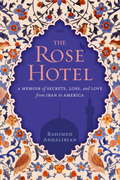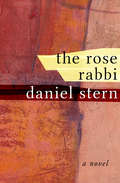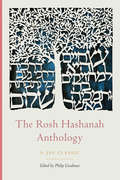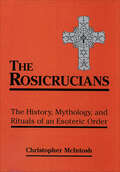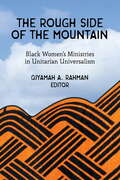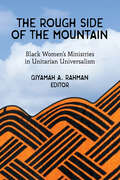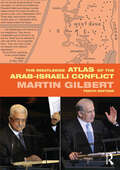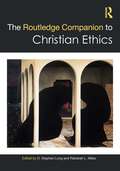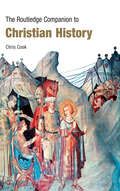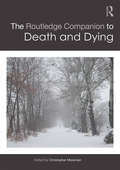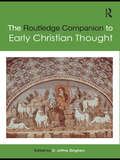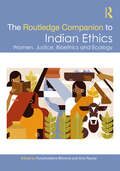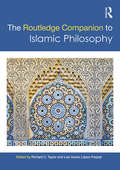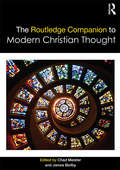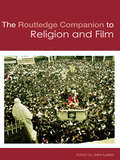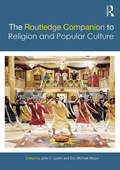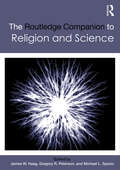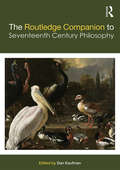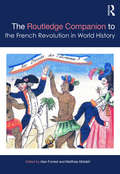- Table View
- List View
The Rose Hotel
by Rahimeh AndalibianIn this searing memoir, Iranian-born author Rahimeh Andalibian tells the story of her family: how they survived the 1979 revolution; their move to California; and their attempts to adapt in the face of addiction, teenage rebellion, and new traditions. Andalibian struggles to make sense of two brutal crimes: a rape, avenged by her father, and a murder, of which her beloved oldest brother stands accused. She takes us first into her family's tranquil, jasmine-scented days of prosperity in Mashhad, Iran, where she and her brothers grow up in luxury at the Rose Hotel, owned by her father. In the aftermath of the 1979 revolution the family is forced to flee: first to the safety of a mansion in Tehran, next to a squalid one-room flat in London, and finally to California, where they discover they are not free from the weight of their own secrets. Caught between their parents' traditional values and their desire to embrace an American way of life, Andalibian and her brothers struggle to find peace in the wake of tragedy. Eloquently and intimately told, The Rose Hotel is a universal story of healing and rebirth.
The Rose Rabbi: A Novel
by Daniel SternA witty novel about art, morality, and the midlife crisis of an earnest man who works at an advertising agency, by an &“original and accomplished&” writer (Los Angeles Times). Wolf Walker is that noblest of creatures: the unrealized artist. He is also ethical advisor to the Lester & French Advertising Agency—a professional conscience. After reading an alarming entry in his wife&’s diary on his fortieth birthday, Wolf sets out to reclaim his sense of identity. His resulting midlife crisis is both surreal and hilarious, poignant and imaginative. The Rose Rabbi is a fable about the relation between morals, art, and life, from one of America&’s best writers of fiction.
The Rose Rabbi: A Novel (Library Of Modern Jewish Literature Ser.)
by Daniel SternA witty novel about art, morality, and the midlife crisis of an earnest man who works at an advertising agency, by an &“original and accomplished&” writer (Los Angeles Times). Wolf Walker is that noblest of creatures: the unrealized artist. He is also ethical advisor to the Lester & French Advertising Agency—a professional conscience. After reading an alarming entry in his wife&’s diary on his fortieth birthday, Wolf sets out to reclaim his sense of identity. His resulting midlife crisis is both surreal and hilarious, poignant and imaginative. The Rose Rabbi is a fable about the relation between morals, art, and life, from one of America&’s best writers of fiction.
The Rosh Hashanah Anthology (The JPS Holiday Anthologies)
by Rabbi Philip GoodmanBack by popular demand, the classic JPS holiday anthologies remain essential and relevant in our digital age. Unequaled in-depth compilations of classic and contemporary writings, they have long guided rabbis, cantors, educators, and other readers seeking the origins, meanings, and varied celebrations of the Jewish festivals. The Rosh Hashanah Anthology is designed to make the commemoration of the Jewish New Year meaningful as both a solemn and a festive day. Its religious impact, significance, history, and messages are embodied in the great treasures of Jewish classical writings—the Bible, Talmud, midrashim, medieval theological and philosophical works, codes of law and liturgy—and all are featured in this volume. In addition, modern works by S. Y. Agnon, Franz Rosenzweig, Isaac Bashevis Singer, and Elie Wiesel accompany liturgical selections with commentaries, depictions of Rosh Hashanah observances in many lands, detailed programming suggestions, illustrations, and an extensive bibliography.
The Rosicrucians: The History, Mythology, and Rituals of an Esoteric Order
by Christopher McIntoshAn introduction to the spiritual movement that influenced Western esoteric tradition—from alchemy and Freemasonry to the Hermetic Order of the Golden Dawn.This scholarly work traces the mysterious Fraternity of the Rosy Cross, from its inception upon the discovery of Father Christian Rosenkreuz’s perfectly preserved body in a seven-sided vault to present-day organizations in America. McIntosh includes a survey of Rosicrucianism in America, exploring the latter day survivals of Bacon’s New Atlantis. Perfect for students of the Western Mystery tradition who want an introduction to Rosicrucianism, with good resources for further study.
The Rough Side Of The Mountain: Black Women's Ministries In Unitarian Universalism
by Qiyamah A. RahmanThe Rough Side of the Mountain: Black Women's Ministries in Unitarian Universalism
by Qiyamah A. RahmanEditor and scholar Qiyamah A. Rahman collects and explores the unique journeys of Black Unitarian Universalist clergywomen, celebrating their wisdom, resilience, and contributions within and beyond Unitarian Universalism. In The Rough Side of the Mountain: Black Women’s Ministries in Unitarian Universalism, editor and scholar Qiyamah A. Rahman collects and explores the unique journeys of Black Unitarian Universalist clergywomen, celebrating their wisdom, resilience, and contributions within and beyond Unitarian Universalism. Rahman provides crucial historical background and context, outlining the history of female Black spiritual leaders going back to ancient times, African spirituality, the Black church, the Civil Rights Movement, and Unitarian Universalist history. This singular anthology lifts up the stories and wisdom of Black Unitarian Universalist clergywomen past and present, whose contributions to this faith are just beginning to be recognized.
The Routledge Atlas of the Arab-Israeli Conflict (Routledge Historical Atlases)
by Martin GilbertThe Routledge Atlas of the Arab-Israeli Conflict traces not only the tangled and bitter history of the Arab-Jewish struggle from the early twentieth century to the present, including the death of Yasser Arafat and recent proposals for compromise and co-operation, it also illustrates the current moves towards finding peace, and the efforts to bring the horrors of the fighting to an end through negotiation and agreed boundaries. In 227 maps, the complete history of the conflict is revealed, including: The Prelude and Background to the Conflict - from the presence of Jews in Palestine before the Arab conquest to the attitude of Britain to the Arabs and Jews since 1915 The Jewish National Home - from the early Jewish settlement and the Zionist plan for Palestine in 1919 to the involvement of the Arab world from 1945 to the present day The Intensification of the Conflict - from the Arab response to the United Nations partition plan of November 1947 to the declaration of Israeli independence in May 1948 The State of Israel - from the Israeli War of Independence and the Suez and Six Day Wars to the October War (the Yom Kippur War), the first and second intifadas, the suicide-bomb campaign, the Israel-Hezbollah War of 2006, Operation Cast lead against the Gaza Strip in 2009, the Gaza Flotilla of 2012 and Nakba Day 2011 The Moves to find Peace - from the first and second Camp David talks and the death of Arafat, to the continuing search for peace, including the Annapolis Conference, 2007, the work of the Quartet Emissary, Tony Blair 2007-2011, and the ongoing Palestinian search for statehood.
The Routledge Atlas of the Arab-Israeli Conflict: The Complete History Of The Struggle And The Efforts To Resolve It (Routledge Historical Atlases)
by Martin GilbertThe Routledge Atlas of the Arab-Israeli Conflict traces not only the tangled and bitter history of the Arab-Jewish struggle from the early twentieth century to the present, including the death of Yasser Arafat and recent proposals for compromise and co-operation, it also illustrates the current moves towards finding peace, and the efforts to bring the horrors of the fighting to an end through negotiation and agreed boundaries. In 227 maps, the complete history of the conflict is revealed, including: The Prelude and Background to the Conflict - from the presence of Jews in Palestine before the Arab conquest to the attitude of Britain to the Arabs and Jews since 1915 The Jewish National Home - from the early Jewish settlement and the Zionist plan for Palestine in 1919 to the involvement of the Arab world from 1945 to the present day The Intensification of the Conflict - from the Arab response to the United Nations partition plan of November 1947 to the declaration of Israeli independence in May 1948 The State of Israel - from the Israeli War of Independence and the Suez and Six Day Wars to the October War (the Yom Kippur War), the first and second intifadas, the suicide-bomb campaign, the Israel-Hezbollah War of 2006, Operation Cast lead against the Gaza Strip in 2009, the Gaza Flotilla of 2012 and Nakba Day 2011 The Moves to find Peace - from the first and second Camp David talks and the death of Arafat, to the continuing search for peace, including the Annapolis Conference, 2007, the work of the Quartet Emissary, Tony Blair 2007-2011, and the ongoing Palestinian search for statehood.
The Routledge Companion to Christian Ethics (Routledge Religion Companions)
by D. Stephen Long Rebekah L. MilesThe Routledge Companion to Christian Ethics brings together two different but related disciplines; the first is contemplative or theoretical, asking what are the beliefs or doctrines that characterize Christianity, whilst the second is practical, asking what are the ethical practices that attend its teachings. The movement between the theoretical and practical aspects is not, however, one way, as doctrine and life are mutually informing. In this comprehensive volume, leading scholars address key topics, problems and debates in this hotly debated topic within a truly global context. Comprising over 35 chapters by a team of international contributors, the handbook is divided into three parts based on the three persons of the Trinity: God the Father, God the Son, and God the Holy Spirit. Within these sections, cutting-edge issues are examined, including: God and genetics War, peace, and violence White supremacy Creation and sexuality Digital ethics Transgender studies Climate change Immigration and refugees Adopting a practical approach that must consider new concerns that have arisen with recent social, political, and cultural shifts, The Routledge Companion to Christian Ethics is essential reading for students and researchers in Christian ethics, religious ethics and Christianity studies. The handbook will also be very useful for those in related fields such as ethics and philosophy.
The Routledge Companion to Christian History (Routledge Companions to History)
by Chris CookThe Routledge Companion to Christian History is an indispensable aid for anyone seeking comprehensive coverage of the facts in clear, concise and easy to use language. It covers: all key events in the Christian calendar from the persecution of the Roman Empire to the fall of Communism and the rise of Fundamentalism the impact of Islam, the Crusades, Monasticism, and the spread of popular religious movements cross-cultural coverage; as well as Western Christendom, the Orthodox churches of the East and the 'new' churches of Asia and Africa. Fully cross referenced throughout with a combination of chronologies, glossary and statistics this packed volumes contains everything for the first time student or for anyone revisiting the subject.
The Routledge Companion to Death and Dying (Routledge Religion Companions)
by Christopher M MoremanFew issues apply universally to people as poignantly as death and dying. All religions address concerns with death from the handling of human remains, to defining death, to suggesting what happens after life. The Routledge Companion to Death and Dying provides readers with an overview of the study of death and dying. Questions of death, mortality, and more recently of end-of-life care, have long been important ones and scholars from a range of fields have approached the topic in a number of ways. Comprising over fifty-two chapters from a team of international contributors, the companion covers: funerary and mourning practices; concepts of the afterlife; psychical issues associated with death and dying; clinical and ethical issues; philosophical issues; death and dying as represented in popular culture. This comprehensive collection of essays will bring together perspectives from fields as diverse as history, philosophy, literature, psychology, archaeology and religious studies, while including various religious traditions, including established religions like Christianity, Judaism, Islam, Hinduism, and Buddhism as well as new or less widely known traditions such as the Spiritualist Movement, the Church of Latter Day Saints, and Raëlianism. The Routledge Companion to Death and Dying is essential reading for students and researchers in religious studies, philosophy and literature.
The Routledge Companion to Early Christian Thought (Routledge Religion Companions)
by D. Jeffrey BinghamThe shape and course which Christian thought has taken over its history is largely due to the contributions of individuals and communities in the second and third centuries. Bringing together a remarkable team of distinguished scholars, The Routledge Companion to Early Christian Thought is the ideal companion for those seeking to understand the way in which Early Christian thought developed within its broader cultural milieu and was communicated through its literature, especially as it was directed toward theological concerns. Divided into three parts, the Companion: asks how Christianity's development was impacted by its interaction with cultural, philosophical, and religious elements within the broader context of the second and third centuries. examines the way in which Early Christian thought was manifest in key individuals and literature in these centuries. analyses Early Christian thought as it was directed toward theological concerns such as God, Christ, Redemption, Scripture, and the community and its worship.
The Routledge Companion to Indian Ethics: Women, Justice, Bioethics and Ecology
by Purushottama Bilimoria Amy RaynerThis companion volume focuses on the application and practical ramifications of Indian ethics. Here Indian dharma ethics is moved from its preeminent religious origins and classical metaethical proclivity to, what Kant would call, practical reason – or in Aristotle’s poignant terms, ēhikos and phronēis –and in more modern parlance normative ethics. Our study examines a wide range of social and normative challenges facing people in such diverse areas as women’s rights, infant ethics, politics, law, justice, bioethics and ecology. As a contemporary volume, it builds linkages between existing theories and emerging moral issues, problems and questions in today’s India in the global arena. The volume brings together contributions from some 40 philosophers and contemporary thinkers on practical ethics, exploring both the scope and boundaries or limits of ethics as applied to everyday and real-life concerns and socio-economic challenges facing India in the context of a troubled globalizing world. As such, this collection draws on multiple forms of writing and research, including narrative ethics, interviews, critical case studies and textual analyses.The book will be of interest to scholars, researchers and students of Indian philosophy, Indian ethics, women and infant issues, social justice, environmental ethics, bioethics, animal ethics and cross-cultural responses to dominant Western moral thought. It will also be useful to researchers working on the intersection of Gandhi, sustainability, ecology, theology, feminism, comparative philosophy and dharma studies.
The Routledge Companion to Islamic Philosophy (Routledge Philosophy Companions)
by Richard C. Taylor Luis Xavier López-FarjeatThis valuable reference work synthesizes and elucidates traditional themes and issues in Islamic philosophy as well as prominent topics emerging from the last twenty years of scholarship. Written for a wide readership of students and scholars, The Routledge Companion to Islamic Philosophy is unique in including coverage of both perennial philosophical issues in an Islamic context and also distinct concerns that emerge from Islamic religious thought. This work constitutes a substantial affirmation that Islamic philosophy is an integral part of the Western philosophical tradition. Featuring 33 chapters, divided into seven thematic sections, this volume explores the major areas of philosophy: Logic, Metaphysics, Philosophy in the Sciences, Philosophy of Mind/Epistemology, and Ethics/Politics as well as philosophical issues salient in Islamic revelation, theology, prophecy, and mysticism. Other features include: •A focus on both the classical and post-classical periods •A contributing body that includes both widely respected scholars from around the world and a handful of the very best younger scholars •"Reference" and "Further Reading" sections for each chapter and a comprehensive index for the whole volume The result is a work that captures Islamic philosophy as philosophy. In this way it serves students and scholars of philosophy and religious studies and at the same time provides valuable essays relevant to the study of Islamic thought and theology.
The Routledge Companion to John Wesley (Routledge Religion Companions)
by Joseph W. Cunningham Clive Murray NorrisThe Routledge Companion to John Wesley provides an overview of the work and ideas of one of the principal founders of Methodism, John Wesley (1703-91). Wesley remains highly influential, especially within the worldwide Methodist movement of some eighty million people. As a preacher and religious reformer his efforts led to the rise of a global Protestant movement, but the wide-ranging topics addressed in his writings also suggest a mind steeped in the intellectual developments of the North Atlantic, early modern world. His numerous publications cover not only theology but ethics, history, aesthetics, politics, human rights, health and wellbeing, cosmology and ecology. This volume places Wesley within his eighteenth-century context, analyzes his contribution to thought across his multiple interests, and assesses his continuing relevance today. It contains essays by an international team of scholars, drawn from within the Methodist tradition and beyond. This is a valuable reference particularly for scholars of Methodist Studies, theology, church history and religious history.
The Routledge Companion to Modern Christian Thought (Routledge Religion Companions)
by Chad Meister James BeilbyThis Companion provides an unrivalled view of the field of modern Christian thought, from the Enlightenment to the twentieth century and beyond. Written by an outstanding team of theologians and philosophers of religion, it covers the following topics within Christian thought: Key figures and influencers Central events and movements Major theological issues and key approaches to Christian Theology Recent topics and trends in Christian thought Each entry is clear and accessible, making the book the ideal resource for students of Christian thought and history and philosophy of religion, and a valuable reference for professional theologians and philosophers.
The Routledge Companion to Religion and Film (Routledge Religion Companions)
by John LydenThe Routledge Companion to Religion and Film brings together a lively and experienced team of contributors to introduce students to the key topics in religion and film and to investigate the ways in which the exciting subject of religion and film is developing for more experienced scholars. Divided into four parts, the Companion: analyzes the history of the interaction of religion and film, through periods of censorship as well as appreciation of the medium studies religion-in-film, examining how the world’s major religions, as well as Postcolonial, Japanese and New Religions, are depicted by and within films uses diverse methodologies to explore religion and film, such as psychoanalytical, theological and feminist approaches, and audience reception analyzes religious themes in film, including Redemption, the Demonic, Jesus or Christ Figures, Heroes and Superheroes considers films as diverse as The Passion of the Christ, The Matrix, Star Wars and Groundhog Day. This definitive book provides an accessible resource to this emerging field and is an indispensable guide to religion and film for students of Religion, Film Studies, and beyond.
The Routledge Companion to Religion and Popular Culture (Routledge Religion Companions)
by John C. Lyden Eric Michael MazurReligion and popular culture is a fast-growing field that spans a variety of disciplines. This volume offers the first real survey of the field to date and provides a guide for the work of future scholars. It explores: key issues of definition and of methodology religious encounters with popular culture across media, material culture and space, ranging from videogames and social networks to cooking and kitsch, architecture and national monuments representations of religious traditions in the media and popular culture, including important non-Western spheres such as Bollywood This Companion will serve as an enjoyable and informative resource for students and a stimulus to future scholarly work.
The Routledge Companion to Religion and Science (Routledge Religion Companions)
by Gregory R. Peterson Michael L. Spezio James. W. HaagThe field of religion and science is one of the most exciting and dynamic areas of research today. This Companion brings together an outstanding team of scholars to explore the ways in which science intersects with the major religions of the world and religious naturalism. The collection provides an overview of the field and also indicates ways in which it is developing. Its multicultural breadth and scientific rigor on topics that are and will be compelling issues in the first part of the twenty-first century and beyond will be welcomed by students and scholars alike.
The Routledge Companion to Seventeenth Century Philosophy (Routledge Philosophy Companions)
by Dan KaufmanThe Routledge Companion to Seventeenth Century Philosophy is an outstanding survey of one of the most important eras in the history of Western philosophy - one which witnessed philosophical, scientific, religious and social change on a massive scale. A team of twenty international contributors provide students and scholars of philosophy and related disciplines with a detailed and accessible guide to seventeenth century philosophy. The Companion is divided into seven parts: Historical Context Metaphysics Epistemology Mind and Language Moral and Political Philosophy Natural Philosophy and the Material World Philosophical Theology. Major topics and themes are explored and discussed, including the scholastic context that shaped philosophy of the period, free will, skepticism, logic, mind-body problems, consciousness, arguments for the existence of God, and the problem of evil. As such The Routledge Companion to Seventeenth Century Philosophy is essential reading for all students of the period, both in philosophy and related disciplines such as literature, history, politics, and religious studies.
The Routledge Companion to the Christian Church (Routledge Religion Companions)
by Lewis S. Mudge Gerard MannionThe nature and story of the Christian church is immensely important to theology students and scholars alike. Written by an international team of distinguished scholars, this comprehensive book introduces students to the fundamental historical, systematic, moral and ecclesiological aspects of the study of the church, as well as serving as a resource for scholars engaging in ecclesiological debates on a wide variety of issues. It divides into six parts: the church in its historical context the different denominational traditions global perspectives methods and debates in ecclesiology key concepts and themes ecclesiology and other disciplines: social sciences, philosophy, literature and film. Authoritative, accessible and easily navigable, this book is indispensable for everyone interested in the nature and history of the Christian Church.
The Routledge Companion to the French Revolution in World History (Routledge Companions)
by Alan Forrest Matthias MiddellThe Routledge Companion to the French Revolution in World History engages with some of the most recent trends in French revolutionary scholarship by considering the Revolution in its global context. Across seventeen chapters an international team of contributors examine the impact of the Revolution not only on its European neighbours but on Latin America, North America and Africa, assess how far events there impacted on the Revolution in France, and suggest something of the Revolution’s enduring legacy in the modern world. The Companion views the French Revolution through a deliberately wide lens. The first section deals with its global repercussions from the Mediterranean to the Caribbean and includes a discussion of major insurrections such as those in Haiti and Venezuela. Three chapters then dissect the often complex and entangled relations with other revolutionary movements, in seventeenth-century Britain, the American colonies and Meiji Japan. The focus then switches to international involvement in the events of 1789 and the circulation of ideas, people, goods and capital. In a final section contributors throw light on how the Revolution was and is still remembered across the globe, with chapters on Russia, China and Australasia. An introduction by the editors places the Revolution in its political, historical and historiographical context. The Routledge Companion to the French Revolution in World History is a timely and important contribution to scholarship of the French Revolution.
The Routledge Companion to the Life and Legacy of Guru Hargobind: Sovereignty, Militancy, and Empowerment of the Sikh Panth (Sikh Literature, Culture and Society)
by Pashaura SinghThis companion studies the life and legacy of Guru Hargobind (1590–1644), the Sixth Guru of the Sikh tradition. It highlights the complex nature of Sikh society and culture in the historical and socio-economic context of Mughal India.The book reconstructs the life of Guru Hargobind by exploring the “divine presence” in history and memory. It addresses the questions of why and how militancy became explicit during Guru Hargobind’s spiritual reign and examines the growth of the Sikh community’s self-consciousness, separatism, and militancy as an integral part of the process of empowerment of the Sikh Panth.A unique contribution, this book provides a multidisciplinary paradigm in the reconstruction of Guru Hargobind’s life and legacy. It will be indispensable for students of Sikh studies, religious studies, history, sociology of religion, anthropology, material culture, literary and textual studies, politics, militancy, and South Asian studies.
